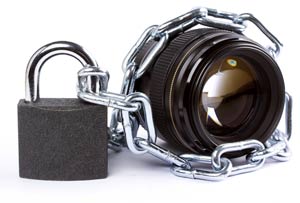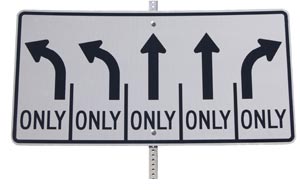 To those new to photography the terms in the sphere of licensing images can be a little confusing to say the least. It's a common beginner's mistake to think that when you sell or upload a stock image you are selling or transferring your copyright.
To those new to photography the terms in the sphere of licensing images can be a little confusing to say the least. It's a common beginner's mistake to think that when you sell or upload a stock image you are selling or transferring your copyright.
The first important terms to separate and understand is the difference between licensing and copyright, which some people confuse and use interchangeably. When microstock photographers talk about 'selling images' they are actually referring to licensing them. Each time an image is 'downloaded' from a microstock site the person paying for the image is in effect licensing it for use.
Copyright is what you automatically get and own forever (or a long time at very least) when you create a picture (unless you sign that right away by working as an employee of a company or sign some other contracted agreement). As a microstock photographer you always retain copyright to your images. Licensing is the way in which you allow other people to use your work while still keeping control over the copyright yourself. As a microstock photographer you allow the agencies to give out licenses for use of your images in return for them paying you your commissions.
Licensing Models
Below are the main licensing models you might come across while selling microstock images:
RM (Rights Managed) or sometimes called 'royalty paid'
This model is used by the traditional (non microstock) stock agencies. An image user is required to define how the image will be used, and pay 'royalties' for each use. e.g. a payment to use the images in 10000 copies of a company brochure. The pricing structure is defined to vary the pricing depending on the visibility of the image. e.g. a small 1/8th page commercial inside a popular magazine could still more expensive than a full front page of a magazine that only distributes a few thousand copies.
RF (Royalty-Free)
This is the standard microstock license model. It is also used by the traditional stock photo agencies. A user pays a flat rate to buy the image license and then can use that image in any design and media that they choose (within some predefined limits which vary from agency to agency).
Extended License
Not really a licensing model, but an extension to the standard license terms a microstock site provides (perhaps you could call it a relaxing of the terms). As a photographer you normally have to opt-in to selling extended license images. If you do it will allow buyers to use your images on things like photo gifts (t-shirts, or perhaps postcards etc.) These uses are often prohibited in standard royalty-free use as they are considered to be reselling the images.
Creative Commons (CreativeCommons.org)
A non profit organisation who have created a series of popular and simple to understand licensing system types for any images (or anything for that matter!). In general you would only apply these licenses to images that you want to give away free of charge as samples etc. I've mentioned this here as it is the license system that sites like flickr use. Often seen described as 'some rights reserved'
You might also come across GPL and other open source licenses (normally applied to software but can occasionally be applied to images) Similar to creative commons, an older system, less flexible, I only mention it here so that you know what it is. It might need to be applied to your images if you allow them to be used in open source software (probably not a likely occurrence).
Public Domain. Images which are in the environment for anyone to do anything with, without any strings attached at all. The diagram above from the creative commons website is a great explanation of PD images, they are at the opposite end of the spectrum from your full copyright (all rights reserved) so with PD you have no rights reserved at all.
Rights Buyout (Exclusive Use)
A license where a buyer can purchase exclusive use of an image for either a limited time of forever. In either case the image is immediately removed from sale so it cannot be purchased by other buyers. Some microstock sites provide this type of facility, but personally I feel that such exclusivity licenses belong in the world of RM stock photography.
Multiple Licenses
 There is nothing to stop you distributing your images under more than one license, but here is where things can start to get complicated, it's also when you have to be careful if you want to become an 'exclusive photographer', or provide an 'exclusive image' or sell a 'rights buyout'. You cannot do any of these on a microstock site if you already have the same images on sale via one or more other agencies.
There is nothing to stop you distributing your images under more than one license, but here is where things can start to get complicated, it's also when you have to be careful if you want to become an 'exclusive photographer', or provide an 'exclusive image' or sell a 'rights buyout'. You cannot do any of these on a microstock site if you already have the same images on sale via one or more other agencies.
There is a simple choice to make, either sell images exclusively and provide the option to sell a 'rights buyout' at just one agency in return for a larger commission; or sell images at a verity of different agencies without the option of offering exclusivity. The majority of microstock photographers sell the same images via multiple agencies, while still retaining the option to sell some of their images exclusively if there is a niche market for that image and buyers willing to pay highly.
Further Reading:
Microstock Images Usage Licenses Explained
Selling Rights Managed Stock Images




Let me see if I got this
Darcy Kitchin (not verified) on Sun, 2009-10-11 17:34No
Steve Gibson on Wed, 2009-10-14 04:50copyright
Brian (not verified) on Sat, 2010-10-30 04:16